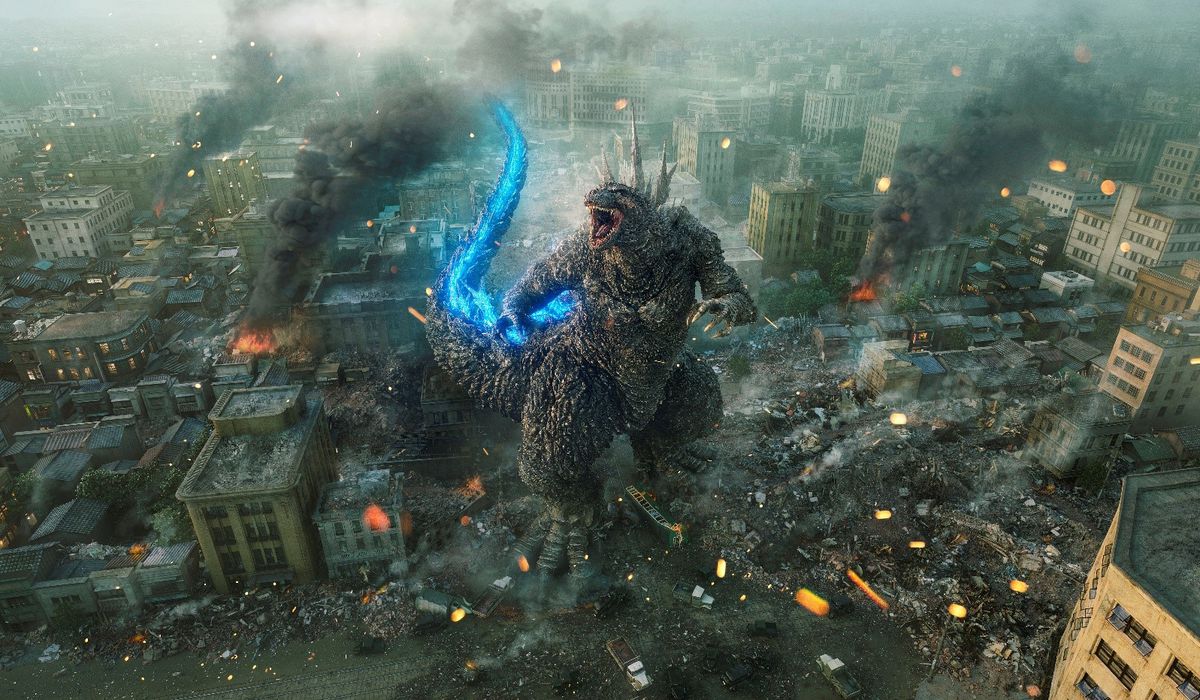Godzilla reigns eternal thanks to years of tiny design changes
There are few pop culture icons more instantly recognizable than Godzilla — and much of that has to do with the fact that, for almost 70 years now, the King of the Monsters has typically been a gargantuan mutated dinosaur with plates on his back and atomic breath. However, upon closer examination, one can find that Godzilla has changed a lot over the years, often on a movie-by-movie basis.
The Godzilla that first debuted in 1954 looks way different than the one we see in 1974 or 1994 or 2014, and with the proliferation of Godzilla media hitting us this year, like Apple TV Plus’ Monarch: Legacy of Monsters and Toho’s Godzilla Minus One, there’s never been a better time to dive deep into the many styles of the world’s favorite nuclear reptile.
Godzilla (1954)
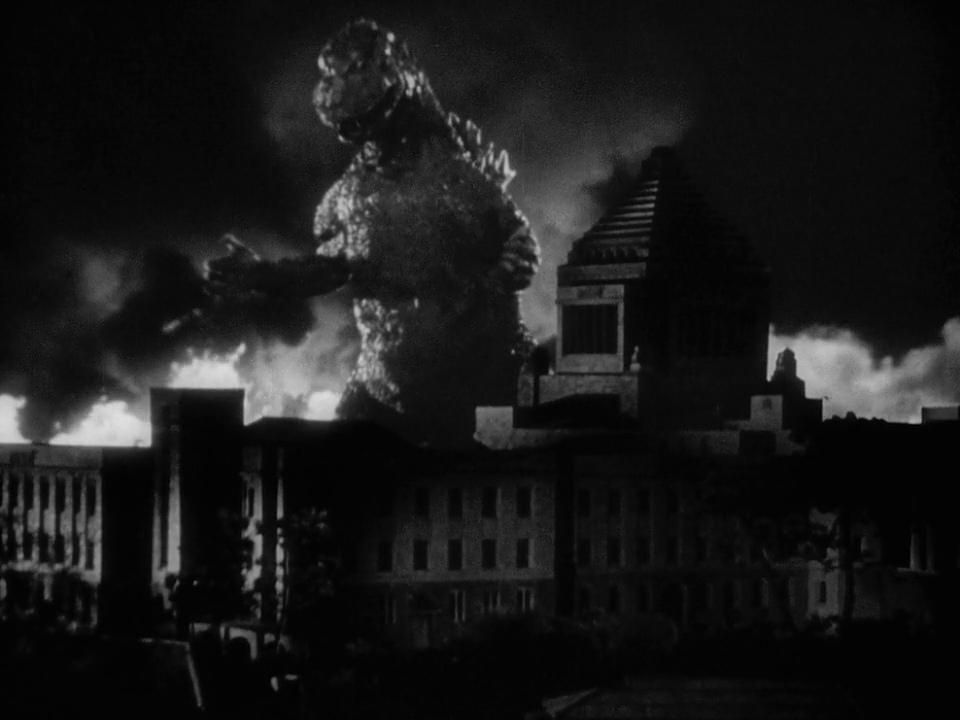
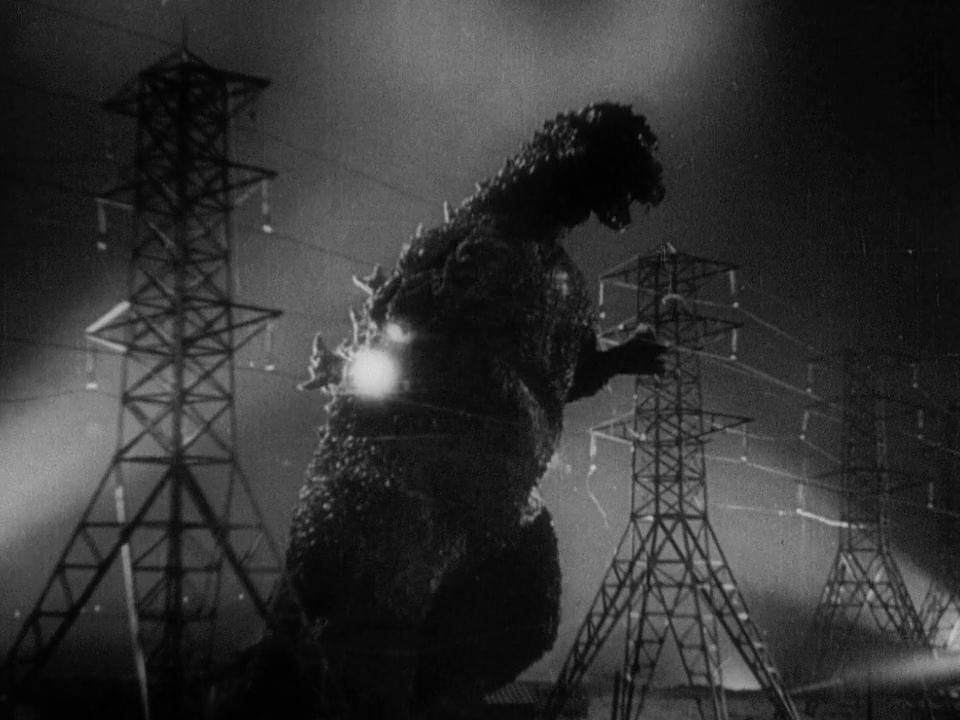
Brought to life with a blend of automation and puppetry (and becoming the godfather of the Japanese tokusatsu genre), the first Godzilla is a menacing creation. Stocky and scarred, this Godzilla is built for an unstoppable stomping charge across Tokyo (his arms are fairly immobile, a feature that won’t be revisited until the 2016 reboot, Shin Godzilla). Every movement feels deliberate, and many shots are devoted to the thick legs and feet plowing through buildings. However, not all of this was pure cinematic intention: Suit actor Haruo Nakajima suffered and sweated under a 100-kilogram suit made of inflexible material.
Godzilla Raids Again (1955)
The suit for the first Godzilla sequel is markedly different from the original: It’s much leaner, with a thinner neck and legs and a head that looks extremely goofy when viewed from the front (the puppet work also takes a hit here). Much of this is due to Godzilla now having to wrestle with his first kaiju nemesis, the four-legged Anguirus. Since many of the films going forward would inevitably revolve around a colossal MMA match, the Big G had to get leaner, more nimble, and more openly emotional. The suits had to reflect all of Godzilla’s little triumphs and frustrations now, moving away from the apocalyptic presence in the 1954 film.
King Kong vs. Godzilla (1962)
Whereas the first two Godzilla suits bore all of the scars and irregularities that would occur to a Tyrannosaurus rex-esque monster that was revived by nuclear weapons, this suit begins an era of streamlining. It’s more inherently reptilian (probably in an attempt to differentiate it from its primate foe, King Kong) and its arms and legs are brawny and combat-ready. It came in handy during the battle scenes — while the brawls in Godzilla Raids Again are frenetic and animalistic, King Kong vs Godzilla was inspired by the muscular antics of Japanese pro wrestling.
Mothra vs. Godzilla (1964) and Ghidorah, the Three-Headed Monster (1964)
Godzilla’s fourth suit is a marvel — it’s sleek enough that Godzilla can roll and wrestle (and be physically outmatched by the three-headed space dragon King Ghidorah and go toe-to-toe with the graceful Mothra), but its face and eyes speak pure malice in a way that hadn’t been achieved since the first film. Nakajima, at this point, had perfected his Godzilla walk and fighting stance, keeping his arms slightly raised at the side and his palms facing slightly outward. It looks akin to sumo in a way, defining Godzilla as ready for all challengers.
Invasion of Astro-Monster (1965) and Ebirah, Horror of the Deep (1966)
As it became more apparent that Godzilla films were adored primarily by children and monster movies began to compete with similar offerings available on TV, Godzilla’s design became a bit less scary. The mid-’60s would see an overhaul in the Big G — he retains his skinnier form, but has very little musculature (this makes Nakajima sometimes look like he’s wearing a big, rubber bag whenever he pops out of the water). His head becomes a friendlier circle shape and his eyes bulge, froglike, from the top of his skull. This is no longer a monster that seeks to destroy Tokyo. In fact, until the mid-’80s, Godzilla wouldn’t be wrecking much of anything again unless, of course, he was under alien control.
Son of Godzilla (1967)
With a head seemingly built to express annoyance at his new offspring, Minilla (at this point, the Godzilla headpieces now often included movable eyes and eyelids, anthropomorphizing the titan further), this suit isn’t much to write home about. Seeing as Godzilla is now a parent with a doughy little youngling to take care of, his oddly humanoid face makes sense here. But it inherits all of the problems from the previous suit as well and looks good at no angle.
Destroy All Monsters (1968), All Monsters Attack (1969), Godzilla vs. Hedorah (1971), and Godzilla vs. Gigan (1972)
A brief return to form for Godzilla, this suit was originally planned to be the final one. A drop in box office had led Toho to assume that Destroy All Monsters would be an all-out kaiju slugfest finale to the series. And this suit, with its more defined features and domineering lizard-y face, makes Godzilla the perfect general for an army of monsters. It wasn’t the end, though, and Godzilla would continue in this suit for three more features. (By the end, though, its long tenure is evident. The suit is literally tearing apart on screen.) Godzilla vs. Gigan would be the end of Nakajima’s spectacular run as the monster — he’d be laid off by Toho after the film, among other contracted actors, in a cost-cutting effort.
Godzilla vs. Megalon (1973), Godzilla vs Mechagodzilla (1974), and Terror of Mechagodzilla (1975)
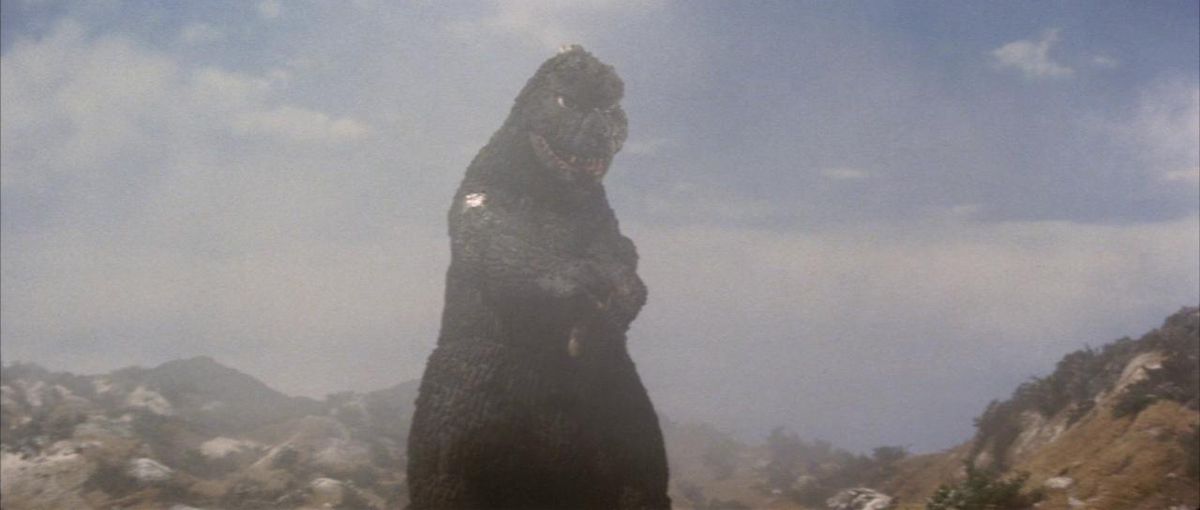
Bearing the exaggerated eyes of prior suits from the mid-’60s, this Godzilla is certainly aimed to be a pal to its adolescent audiences and the precocious kid that takes center stage in Megalon. Thankfully, though, the suit was trimmed up a bit, which means it doesn’t get as baggy here, and when it came time for Godzilla to face Mechagodzilla, adjustments were made to the face to enhance its ferocity. It was a sense of rage that he’d need if he wanted to beat down his robot doppelganger, the most fearsome foe that had been introduced since King Ghidorah. Godzilla would be portrayed by three different suit actors across these three films.
The Return of Godzilla (1984)
The beginning of the Heisei era of Godzilla films also brought with it a new consistent suit actor: Kenpachiro Satsuma. An admirer of Nakajima’s (he’d played Hedorah across from him in the 1971 film), Satsuma would deliver on the studio’s wishes of a more serious, dangerous Godzilla. The suit here reflects that: Godzilla has fangs for the first time since 1955, and the bagginess of many of the previous suits has been replaced by scaly bulk. Too much bulk, possibly, as Satsuma recalled feeling a bit swamped in a suit made for a larger man. In some shots, the suit is replaced by a “cybot,” a mechanical Godzilla that looks downright villainous and was mostly used for promotional purposes.
Godzilla vs. Biollante (1989) and Godzilla vs. King Ghidorah (1991)
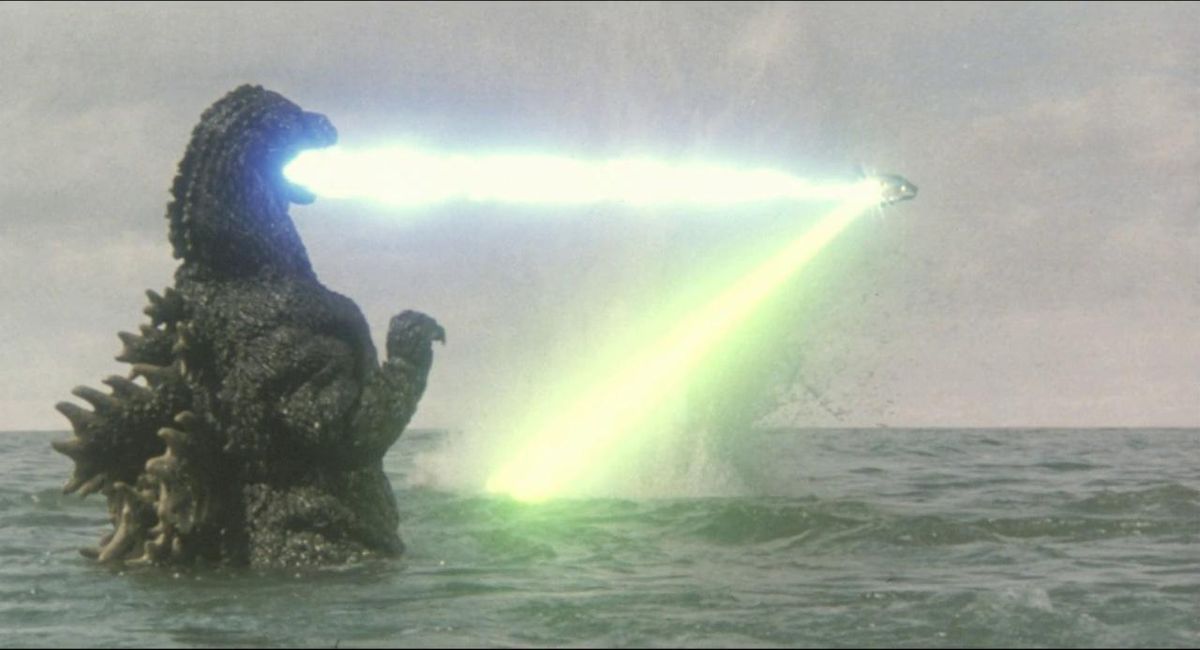
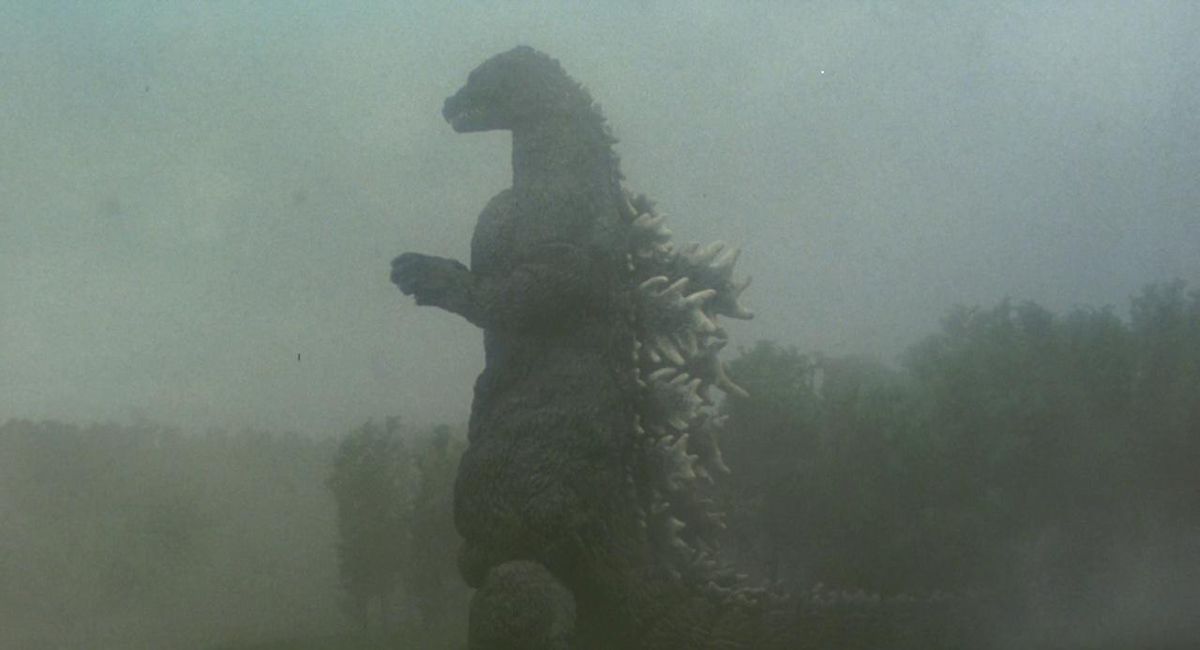
As Godzilla went back into monster combat mode, his suit would change as well. It’s the most reptilian that Godzilla has looked since the early ’60s, with obvious chest muscles (this Godzilla looks like he could bench press a city) and meaty legs. However, unlike the earlier Godzilla films, where the monster was frequently seen tumbling during battle, Satsuma and the filmmakers tend to keep this era’s Godzilla as a more stoic conqueror. As such, an emphasis on laser beams and elaborate transformations replaced the outsized wrestling matches. It was such a good-looking Godzilla suit that it would even be stolen.
Godzilla vs. Mothra (1992)
Unlike the Showa-era suits, the Heisei Godzilla suits require a bit more magnification in order to spot their differences from film to film. For instance, the one here looks a lot like the previous movie’s, except it’s a bit slimmer with an abbreviated snout and noticeably weaker shoulders. It’s the same design tactic they used the first time Godzilla had to take on Mothra nearly 30 years earlier, though Godzilla might’ve needed the size advantage here. He had to take on Mothra’s dark twin, Battra, too.
Godzilla vs. MechaGodzilla II (1993)
Once again, the details shift only slightly here: The most significant alteration is the amount of bulk Godzilla seems to be carrying. He’s a bit heavier here, all the more ready to take on Mechgodzilla’s array of weaponry and keep standing.
Godzilla vs. SpaceGodzilla (1994) and Godzilla vs. Destoroyah (1995)
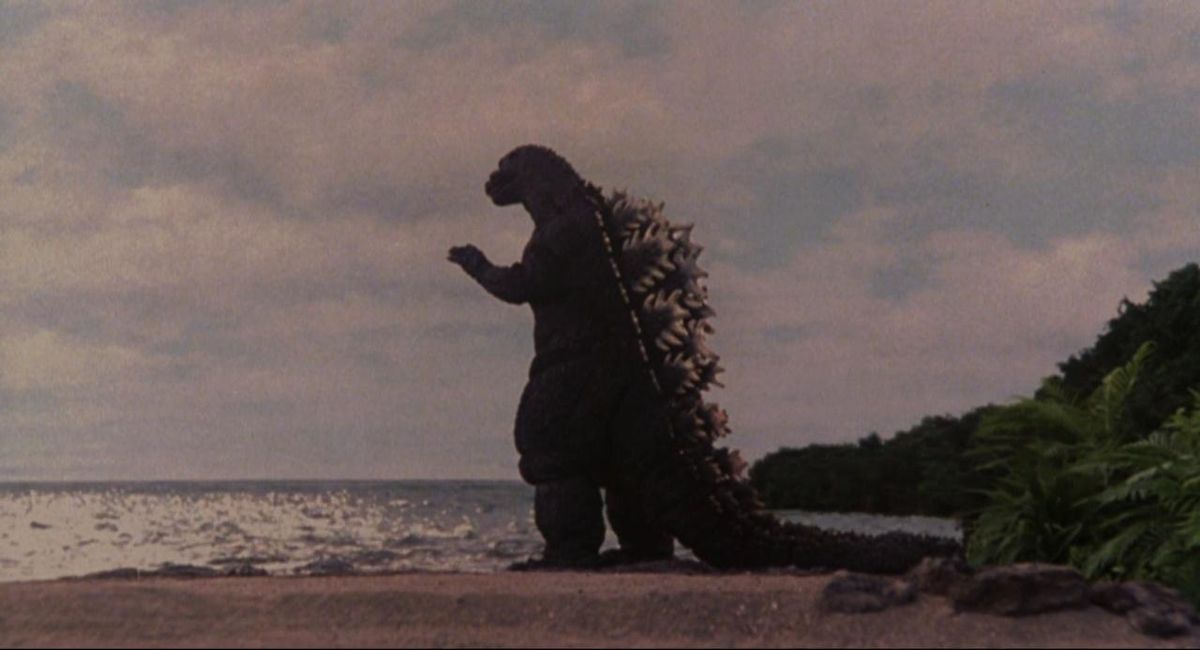

There isn’t really a weak suit in the Heisei era, and they culminate nicely here. Though SpaceGodzilla is generally regarded as a pretty weak film, Destoroyah is a nice callback to Godzilla’s atomic roots and serves as a poignant (temporary) ending for the King of the Monsters as he experiences an internal meltdown. The red and orange lights added to the suits make for a striking, burning image, and Satsuma regards it as his best performance, adding grueling pathos to the kaiju.
Godzilla (1998)
The famously maligned Godzilla from TriStar Pictures gives us perhaps the greatest remix that the monster has ever received. An irradiated marine iguana, this Godzilla is hunched over in a more modern dinosaur pose with its thick legs replaced by lean sprinter’s muscles and his back plates jutting at different angles. In the film, it’s a fairly graceless creature, but its tie-in animated series turned it into a fierce and agile combatant.
Godzilla 2000: Millennium (1999) and Godzilla vs. Megaguirus (2000)
Everything about this suit is pronounced, from the fangs to the spiky dorsal plates to the ears. It’s less muscular than the Heisei-era suits, walking with a slight crouch and bearing no real heroic countenance outside of his willingness to tear apart any monster in sight. At this point, nearly every Godzilla film served as a direct sequel to the 1954 film, so it makes sense that the monster would be shown as both a franchising heavyweight and a potential doomsday creature.
Godzilla, Mothra and King Ghidorah: Giant Monsters All-Out Attack (2001)
As one of the most physically imposing Godzilla suits, the changes here are obvious as well — there are no pupils in the eyes; its neck and long, muscular body appear terrifyingly unnatural; and the teeth make the monster look as angry as his destructive actions suggest (at one point, he pauses to move past a hospital with an injured young woman in it, only to suddenly destroy it with his tail out of spite). Director Shusuke Kaneko had previously overhauled the Gamera series with a trilogy in the ’90s that often surpassed the Godzilla films, and what he brings to Godzilla is a return to the uncontrollable malice of Godzilla’s initial appearance. Godzilla even dwarfs King Ghidorah here, a sure sign that he isn’t messing around.
Godzilla Against Mechagodzilla (2002) and Godzilla: Tokyo SOS (2003)
For a film in which Godzilla takes on a Mechagodzilla that has been constructed around the skeleton of the original 1954 monster, references to the first film are necessary: Godzilla is given his initial gray color; his pointed ears; his harsh, scaly pattern; his large fangs; and his misshapen spine. There are some more modern touches as well, creating — like this film’s chaotic Mechagodzilla — an amalgamation of past and present.
Godzilla: Final Wars (2004)
This 50th-anniversary film has some of the touches of the original, but for the most part, it seems like a direct antithesis. Lean in arms, legs, and torso and with a smaller head, this Godzilla is less of a bringer of death and more of an action figure. It fits the purposes of the movie, though, which is primarily a parade of monsters being taken down by the King of the Monsters over the course of two hours.
Shin Godzilla (2016)

Written and co-directed by the creator of Neon Genesis Evangelion, Hideaki Anno, Shin Godzilla returned Godzilla to his status as both a terrific force of nature and a pure disaster metaphor. Though it goes through several stages of evolution throughout (most famously, the relatively little blood-spewing tadpole that wriggles through Japan), the most famous form is the glowing, disfigured behemoth with a jaw that unhinges for its atomic breath and that wields an abnormally long tail. It’s a design that quickly caught on with audiences (there’s even a theme park where you can zip line straight into a replica of its maw).
Godzilla (2014), Godzilla: King of the Monsters (2019), Godzilla vs. Kong (2021), and Monarch: Legacy of Monsters (2023)
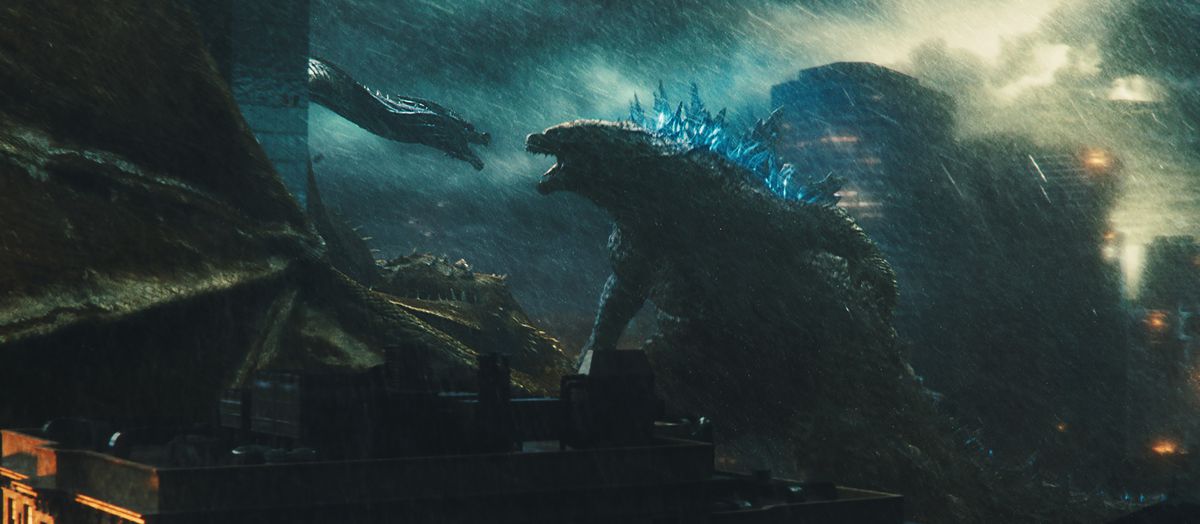
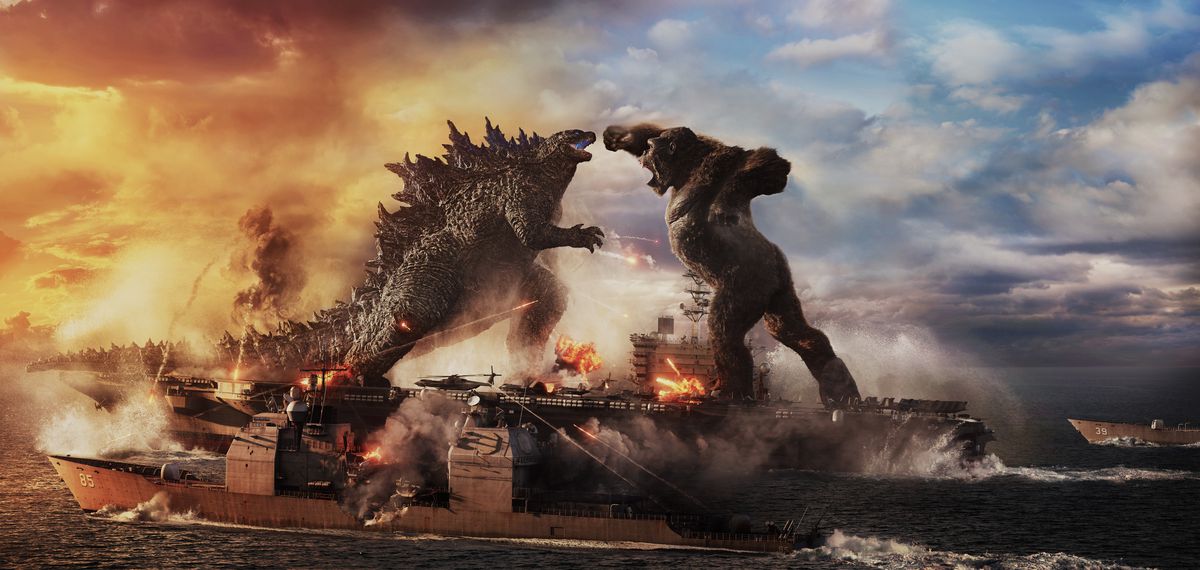

Though the Godzilla of the Monsterverse may look similar across the four movies and TV series that he’s appeared in, there are changes for devotees to appreciate. He retains his bulky frame and boxy, crocodilian head throughout, but one can notice a slight change in height from the 2014 film to King of the Monsters, along with differences in the back plates as a result of damage and its healing process. In Monarch, before he sustained any damage from the military’s attempts to kill him, we also get to see little bits of dirt and earth and moss that have accumulated on a prehistoric creature of his size.
Godzilla Minus One (2023)
